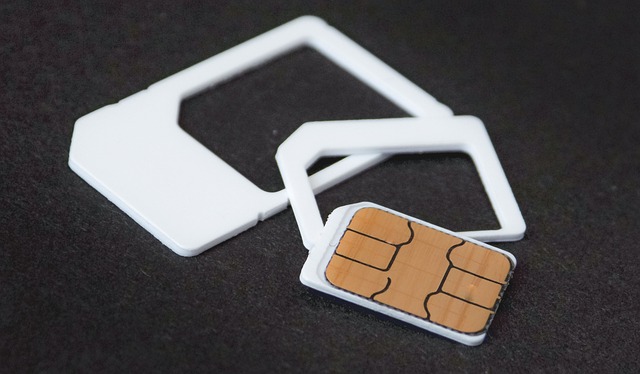Are Portable Solar Generators Worth The Price In 2025?
Portable solar generators have emerged as a compelling alternative to traditional fuel-powered generators, offering clean energy solutions for outdoor adventures, emergency backup power, and off-grid living. As we navigate through 2025, these devices have become more sophisticated and accessible, prompting many consumers to question whether the investment justifies the benefits. The technology has matured significantly, with improved battery capacity, faster charging times, and enhanced durability making these units increasingly attractive for various applications. Understanding the true value proposition requires examining costs, features, and real-world benefits to determine if portable solar generators align with your specific needs and budget.

What Drives Portable Solar Generator Cost In 2025?
The pricing structure for portable solar generators in 2025 reflects several key factors that influence their market value. Battery capacity remains the primary cost driver, with lithium iron phosphate (LiFePO4) batteries commanding premium prices due to their superior longevity and safety characteristics. Manufacturing improvements have reduced production costs compared to previous years, yet inflation and supply chain considerations continue to impact final pricing. The integration of advanced inverter technology, multiple output ports, and smart connectivity features adds significant value but also increases manufacturing complexity. Market competition has intensified, with established brands facing pressure from emerging manufacturers offering competitive alternatives. Solar panel quality and efficiency ratings directly correlate with pricing, as higher-grade panels justify increased costs through improved energy conversion rates.
Essential Portable Solar Generator Features To Consider
Modern portable solar generators incorporate sophisticated technology designed to maximize efficiency and user experience. Battery management systems now include intelligent charging algorithms that optimize power distribution and extend battery lifespan through temperature monitoring and voltage regulation. Multiple output options have become standard, featuring AC outlets, USB-A and USB-C ports, 12V car outlets, and wireless charging pads to accommodate diverse device requirements. Display screens provide real-time information about battery levels, input/output wattage, and estimated runtime for connected devices. Many units now offer smartphone app connectivity, enabling remote monitoring and control capabilities that enhance user convenience. Weather resistance ratings have improved significantly, with many models featuring IP65 or higher protection against dust and water intrusion. Expandable battery systems allow users to increase capacity by connecting additional battery packs, providing scalability for varying power needs.
Key Portable Solar Generator Benefits For Users
The advantages of portable solar generators extend beyond simple power generation, offering practical solutions for multiple scenarios. Environmental impact reduction represents a significant benefit, as these devices produce zero emissions during operation and reduce dependence on fossil fuel-powered alternatives. Silent operation makes them ideal for camping, RV travel, and residential use where noise restrictions apply. Maintenance requirements remain minimal compared to traditional generators, eliminating the need for fuel storage, oil changes, and spark plug replacements. Energy independence becomes achievable during power outages or in remote locations where grid electricity is unavailable. Long-term cost savings materialize through free solar energy harvesting, eliminating ongoing fuel expenses associated with conventional generators. Safety features include automatic shutdown protection, overload prevention, and elimination of carbon monoxide risks that accompany fuel-powered units.
| Product Model | Manufacturer | Battery Capacity | Key Features | Price Range |
|---|---|---|---|---|
| Goal Zero Yeti 1500X | Goal Zero | 1,516Wh | WiFi connectivity, multiple ports | $1,800-$2,000 |
| Jackery Explorer 1000 | Jackery | 1,002Wh | LCD display, pure sine wave | $1,000-$1,200 |
| Bluetti AC200MAX | Bluetti | 2,048Wh | Expandable, wireless charging | $1,600-$1,900 |
| EcoFlow Delta Pro | EcoFlow | 3,600Wh | Fast charging, smart control | $3,200-$3,600 |
| Renogy Phoenix 200 | Renogy | 222Wh | Built-in solar panel, compact | $300-$400 |
Prices, rates, or cost estimates mentioned in this article are based on the latest available information but may change over time. Independent research is advised before making financial decisions.
Calculating Return On Investment For Solar Generators
Determining the financial viability of portable solar generators requires analyzing both upfront costs and long-term savings potential. Initial investment recovery typically occurs within 2-4 years for users who regularly replace fuel-powered generator usage or expensive battery purchases. Emergency preparedness value proves difficult to quantify but becomes invaluable during extended power outages when alternative solutions are unavailable or prohibitively expensive. Recreational users often justify costs through enhanced camping experiences and reduced reliance on crowded powered campsites. Professional applications, including construction work and outdoor events, can generate direct revenue that accelerates payback periods. Energy cost savings vary by region and usage patterns, with higher electricity rates improving the economic case for solar generator adoption.
Making The Right Choice For Your Specific Needs
Selecting an appropriate portable solar generator demands careful consideration of intended applications and power requirements. Calculate your essential device power consumption to determine minimum battery capacity needs, ensuring adequate runtime for critical applications. Consider the trade-offs between portability and capacity, as larger units provide extended power but sacrifice mobility. Evaluate charging options beyond solar panels, including AC wall charging and 12V vehicle charging, to ensure flexibility in various situations. Weather conditions in your area influence solar charging effectiveness, potentially requiring larger panel arrays or supplementary charging methods. Budget constraints must balance initial costs against long-term benefits, recognizing that higher-quality units typically offer superior durability and performance over time.
The value proposition of portable solar generators in 2025 largely depends on individual circumstances and intended applications. For users seeking emergency backup power, environmental sustainability, or off-grid energy solutions, these devices offer compelling benefits that often justify their costs. While upfront investment remains substantial, improved technology, increased competition, and long-term savings potential make portable solar generators increasingly attractive. Careful evaluation of your specific power needs, usage patterns, and budget constraints will ultimately determine whether these innovative devices represent a worthwhile investment for your particular situation.




